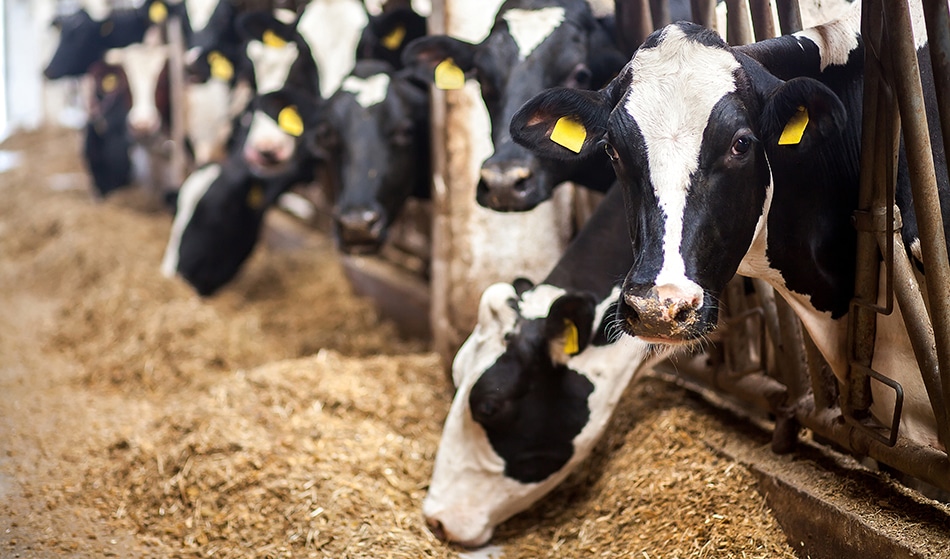WHO Guidelines Microbial Quality of Animal Feed
The World Health Organization (WHO) guidelines on microbial quality in animal feed are critical for ensuring food safety and preventing zoonotic diseases. These guidelines aim to protect both animals and humans by establishing limits on the presence of pathogenic microorganisms such as Salmonella, Escherichia coli O157:H7, Campylobacter jejuni, and Listeria monocytogenes in feedstuffs for animal consumption.
The guidelines are primarily aimed at protecting animal health by reducing the risk of bacterial contamination that can lead to foodborne illnesses when consumed by humans. Compliance with these standards is essential not only for maintaining animal welfare but also for safeguarding public health. By adhering to WHO recommendations, laboratories and testing facilities ensure that they meet international best practices in microbial quality assurance.
The guidelines are based on the principles of good manufacturing practices (GMP), hazard analysis critical control point (HACCP) systems, and the use of validated test methods such as ISO 16865-2017 for Salmonella detection. These standards provide a framework for identifying potential hazards in animal feed production processes and implementing measures to mitigate them.
Compliance with WHO guidelines requires laboratories to have robust testing protocols, capable equipment, and trained personnel. The use of advanced analytical techniques like quantitative PCR (qPCR), high-performance liquid chromatography (HPLC), or gas chromatography-mass spectrometry (GC-MS) is often necessary for accurate detection and quantification of microorganisms in feed samples.
To ensure consistent results, laboratories must follow strict sample preparation procedures. This includes thorough cleaning of laboratory equipment, proper handling of potentially hazardous materials, and the use of appropriate preservation methods to prevent microbial growth during transport and storage.
The testing process involves several steps: sampling from feed batches, preparing samples for analysis, performing microbiological tests, and interpreting results against WHO thresholds. The choice of test method depends on the specific microorganism being targeted, but generally includes enrichment cultures, direct plating techniques, or molecular assays depending on the pathogen.
Once testing is complete, laboratories produce detailed reports outlining findings along with recommendations for corrective actions if necessary. These reports serve as valuable tools for quality managers and compliance officers to assess current practices and implement improvements where required. Regular audits based on WHO guidelines help maintain high standards of microbial safety throughout the supply chain.
Scope and Methodology
The scope of testing under WHO Guidelines for Microbial Quality in Animal Feed encompasses various aspects including sampling, sample preparation, methodological approaches, and interpretation of results. This comprehensive approach ensures that all potential sources of contamination are identified and addressed.
Sampling protocols must be carefully designed to represent the entire batch accurately. Representative samples should be collected from different parts of the feed production process—from raw material intake through manufacturing stages up until final packaging. Samples need to reflect variability within each lot, which could arise due to variations in ingredient quality or processing conditions.
Sample preparation involves several steps aimed at preparing samples for analysis without altering their microbiological characteristics significantly. This includes maintaining proper temperatures during transport and storage, using appropriate preservatives if needed, and ensuring that all equipment used is clean and sterile.
The methodology for testing varies depending on the type of microorganism being targeted. For example, culture-based methods are suitable for detecting Salmonella while molecular techniques like PCR may be preferred for rapid identification of other pathogens. Regardless of the method chosen, it's crucial that they conform to internationally recognized standards such as those provided by ISO or AOAC.
Interpreting results involves comparing observed values against predefined limits set forth in WHO guidelines. Any deviations from acceptable levels indicate areas needing improvement either through changes in production processes or adjustments in raw material sourcing decisions.
Quality and Reliability Assurance
Ensuring the quality and reliability of microbial testing results is paramount when assessing compliance with WHO guidelines. Quality assurance (QA) measures focus on maintaining consistent performance across multiple batches while reliability ensures accurate measurements every time.
To achieve this, laboratories implement rigorous calibration procedures for all analytical instruments used in testing. Regular maintenance schedules are also established to ensure that equipment remains in optimal working condition throughout its lifecycle. Additionally, proficiency testing programs allow ongoing evaluation of laboratory capabilities against benchmarked performance metrics.
Personnel involved in conducting tests undergo continuous training sessions focused on the latest developments in microbiology and analytical techniques relevant to animal feed safety assessments. This ensures that they stay updated on best practices recommended by WHO and other regulatory bodies worldwide.
In addition, quality control (QC) samples are included with every batch processed to serve as internal checks. These QC samples allow for immediate detection of any inconsistencies between expected outcomes versus actual measurements. Any discrepancies found during these comparisons prompt further investigation into possible causes and corrective measures.
Use Cases and Application Examples
| Use Case | Description |
|---|---|
| Supplier Verification | Testing feed ingredients from suppliers before inclusion in formulations ensures that only safe and compliant materials enter the production process. |
| Process Monitoring | Ongoing monitoring of manufacturing processes helps identify and address issues early, preventing contamination at any stage. |
| Batch Release Testing | Testing each batch ensures that only batches meeting WHO standards are released for animal consumption. |
| Investigation of Outbreaks | When outbreaks occur, testing can help determine whether contaminated feed was a contributing factor and trace back to its source if necessary. |
| Compliance Audits | Auditing against WHO guidelines verifies adherence to established standards ensuring continuous improvement in manufacturing practices. |
| New Product Development | Evaluating new raw materials or formulations ensures they meet all required safety criteria before being introduced into production. |





